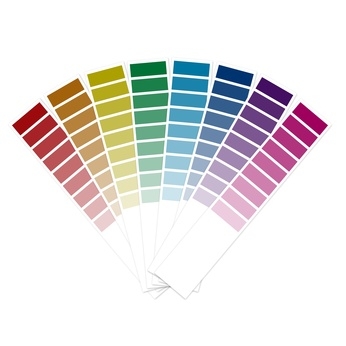
Choosing Colors


Color Wheel: A pie-shaped diagram showing the range and relationship of colors.
Complementary Colors: Hues directly opposite each other on the color wheel. For example: green paired with red or orange paired with blue. As the strongest contrasts, complements tend to intensify each other.
Harmonious (Analogous) Colors: Three to six colors close together on the color wheel. The shared underlying color generally gives such color schemes a coherent, sophisticated look. Since little variety of color is used, interest has to come from texture, pattern, lighting and accessorizing.
Hue: Another term for specific points on the pure, clear range of the color wheel.
Primary Colors: Red, blue and yellow. All other colors are derived from these three.
Monochromatic: Color schemes that are shades and tints of one color. For example: brown and taupe.
Secondary Colors: A mix of two primary colors. For example: violet is made from mixing blue and red, green is made from yellow and blue, and yellow and red combine to make orange.
Triad colors: Three colors that are equally spaced on the color wheel, such as violet, red and orange or red, yellow and blue.
Value/Tone: Degree of lightness or darkness of a color. It is determined by adding black to create a shade, white to create a tint, or gray to create a tone. Monochromatic color schemes are shades and tints of one color.
Find the existing dominant color that you like, or wish to keep, in the room or on the house. On an exterior, this could be the color of the brick or stone, pre-finished windows, or roof. For an interior, it could be the color of your sofa, your flooring, or your window coverings.
Determine what kind of feeling you wish to have in the room or on the home. Warm colors, such as red, orange, yellow or beige, can create an invigorating mood or add cozy intimacy to large spaces. They can help warm up a room that has northern or eastern exposure. Blues, greens, violets or grays, the cool colors, give a serene feeling and can add spaciousness to small places. The balance between light colors and deep colors should also be considered.
Consider how complex a color scheme you wish to undertake. There are three main color schemes to choose from.
"The Beauty is Details" Call For Beauty and Details